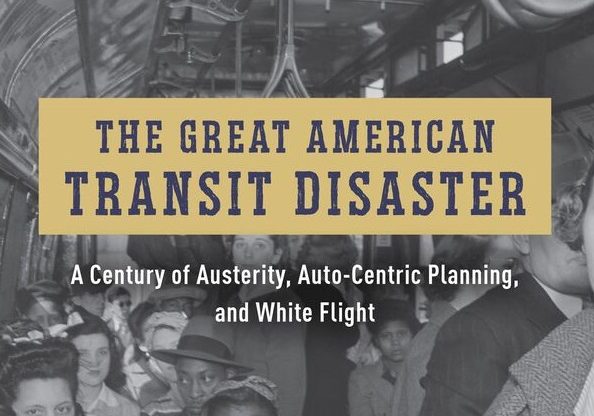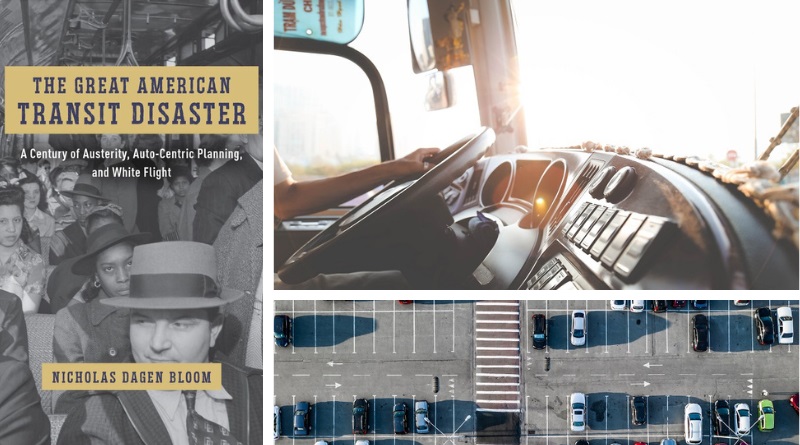Article of the Week

New Jersey Senate Passes Bill Reducing Parking Requirements for Developments Located Adjacent to Public Transit
Justin Calta & Nino Coviello, JDSUPRA, June 15 2023
New Jersey lawmakers have introduced legislation designed to address parking. Senate Bill S3605 seeks to reduce minimum parking requirements for developments located near public transportation facilities. In May, the Senate passed the bill, which is now headed to the Assembly for consideration. It introduces three main reductions, allowing for up to a 50 percent decrease in required parking spaces based on specific requirements.
NJ TOD News

TRENTON—New Trenton Residential Development Project Approved by NJEDA Board for Aspire Tax Credits
NJEDA, June 21 2023
The New Jersey Economic Development Authority (NJEDA) approved $73 million for a multifamily property located in an incentive area in downtown Trenton. The development, situated at 150-170 Broad Street, will offer 120 housing units, including 48 that will be affordable, as well as a 7,500 sq. ft. retail plaza. Governor Phil Murphy signed the New Jersey Economic Recovery Act of 2020, which introduced Aspire, an economic development program aimed at fostering transit-oriented and accessible development. The Trenton development project received approval for up to $29.13 million in Aspire tax credits.

JERSEY CITY—26-Story Residential Tower Tops Out Near Journal Square Path Station
Jessica Perry, NJBIZ, June 15 2023
Arden Group and Spitzer Enterprises recently placed the final slab of concrete for a 26-story residential tower in Jersey City. The $150 million project will comprise 390 rental units, as well as ground-floor retail space and parking. The 425 Summit Street project enjoys a transit-adjacent location, offering residents convenient access to commuting options as early as 2024.
Transit and Equity News

U.S. Adults Waive Healthcare Due to Lack of Transportation
Penny Min, healthnews.com, June 21 2023
By prioritizing the use of personal vehicles, the U.S. transportation system presents transportation barriers that lead to detrimental effects on public health. A recent Robert Wood Johnson Foundation study found that ethnic minorities, who are less likely to own cars, are more inclined to forgo medical treatment. This trend is even more prevalent for those with low income. Transportation insecurity has emerged as a significant concern, as individuals without good access to transportation exhibit a greater likelihood of delaying medical treatment.

Fair Share Transportation Planning
Todd Litman, Planetizen, June 18 2023
Executive Director of the Victoria Transport Policy Institute, Todd Litman, highlights how underfunding non-auto modes have contributed to automobile dependency in North America. Less than 10 percent of all transportation infrastructure investments currently support sidewalks, crosswalks, public paths, and public transit. To rectify this, Litman proposes that investors should optimize the capabilities of their investments by basing their decisions on potential travel demands, social equity goals (serving the physically, economically, and socially disadvantaged), cost efficiency (reducing pollution emissions, reducing traffic, etc.), and mode share targets.
Collaboration for the Future of Public and Active Transportation
Diane Sanchez, Federation of American Scientists, June 15 2023
Historically, the U.S. has focused on expanding highways for personal vehicle travel, creating a reliance on cars among Americans. According to the EPA, transportation accounts for 29 percent of total U.S. greenhouse gas emissions, with nearly 60 percent attributed to light-duty cars. To promote public and active transportation, Sanchez suggests the following measures: 1) FTA should require grant applicants to define collaborative strategies with multiple federal agencies, 2) USDOT and the HUD should collaborate on a prize competition for designing projects, and 3) fostering public-private partnerships.

Regional and National TOD News
Are Electric Bikes the Future of Green Transportation?
Elaina Zachos, National Geographic, June 16 2023
Environmental concerns drive the increasing sales of electric bikes. In 2021, the U.S. witnessed the sale of over 880,000 e-bikes, nearly double the previous year’s figures. Electric bikes, which run on batteries, offer greater accessibility compared to traditional bikes. When it substitutes for car trips, an e-bike can reduce CO2 emissions by 225 kilograms per year. However, e-bikes encounter significant challenges due to the lack of appropriate infrastructure in many locations.

CALIFORNIA—Get on Board California’s Zero-Emission Train!
Zhenying Shao, theicct.org, June 16 2023
The California Air Resources Board (CARB) aims to retire diesel trains and has adopted a groundbreaking regulation, the “In-Use Locomotive Regulation,” which will ban locomotives older than 23 years and require the introduction of new zero-emission locomotives. CARB has the authority to regulate the types of engines that railway companies can use. Many locomotives currently in service have extremely dirty Pre-Tier 0 engines. It is worth noting that this issue is not limited to California, as only 1 percent of tracks in the U.S. are electrified.

Anatomy of an “American Transit Disaster”
David Zipper, Bloomberg, April 27 2023
With the impending end of Covid-era financial support, U.S. transit agencies will likely face having to choose between cutting service or raising fares, or both. A recent book by urban policy and planning professor, Nicholas Dagen Bloom, examines more than a century of repeated crises experienced by U.S. public transportation system.
International TOD News

BRAZIL—Access to Public Transit in São Paulo
Kathryn Kendrick, The Borgen Project, June 23 2023
The Borgen Project, a nonprofit organization that addresses extreme poverty, looks at public transportation in São Paulo, highlighting the effect of extreme wealth disparities and the increasing use of private vehicles on accessibility. Those dwelling in favelas, poor and working-class neighborhoods, often lack access to public transportation, and must frequently travel hours to reach low-paying jobs. Recent fare increases, aimed at addressing inflation, disproportionately affect already over-burdened communities, while those who can afford cars, increasingly buy and use them. To support more transit usage, the city has continued to expand bus-only lanes and invest in rail and bus network expansions.
TAJIKISTAN—Tajikistan Aims to Revitalize Transportation Corridor to Europe
Nuray Alekberli-Museyibova, The Jamestown Foundation, June 15 2023
Turkmenistan and Tajikistan are working together to create international transport routes, enabling both countries to access Europe via the Caspian Sea. On May 10, 2023, the two countries signed documents with the primary objective of facilitating international trade and establishing a vital link between China and Europe, to ensure efficient transportation of goods. Several countries in the South Caucasus region have shown keen interest in the project, as it holds the potential to boost income from transit fees. The transportation of cargo is expected to utilize diverse routes, including rail, land, sea, and air.

